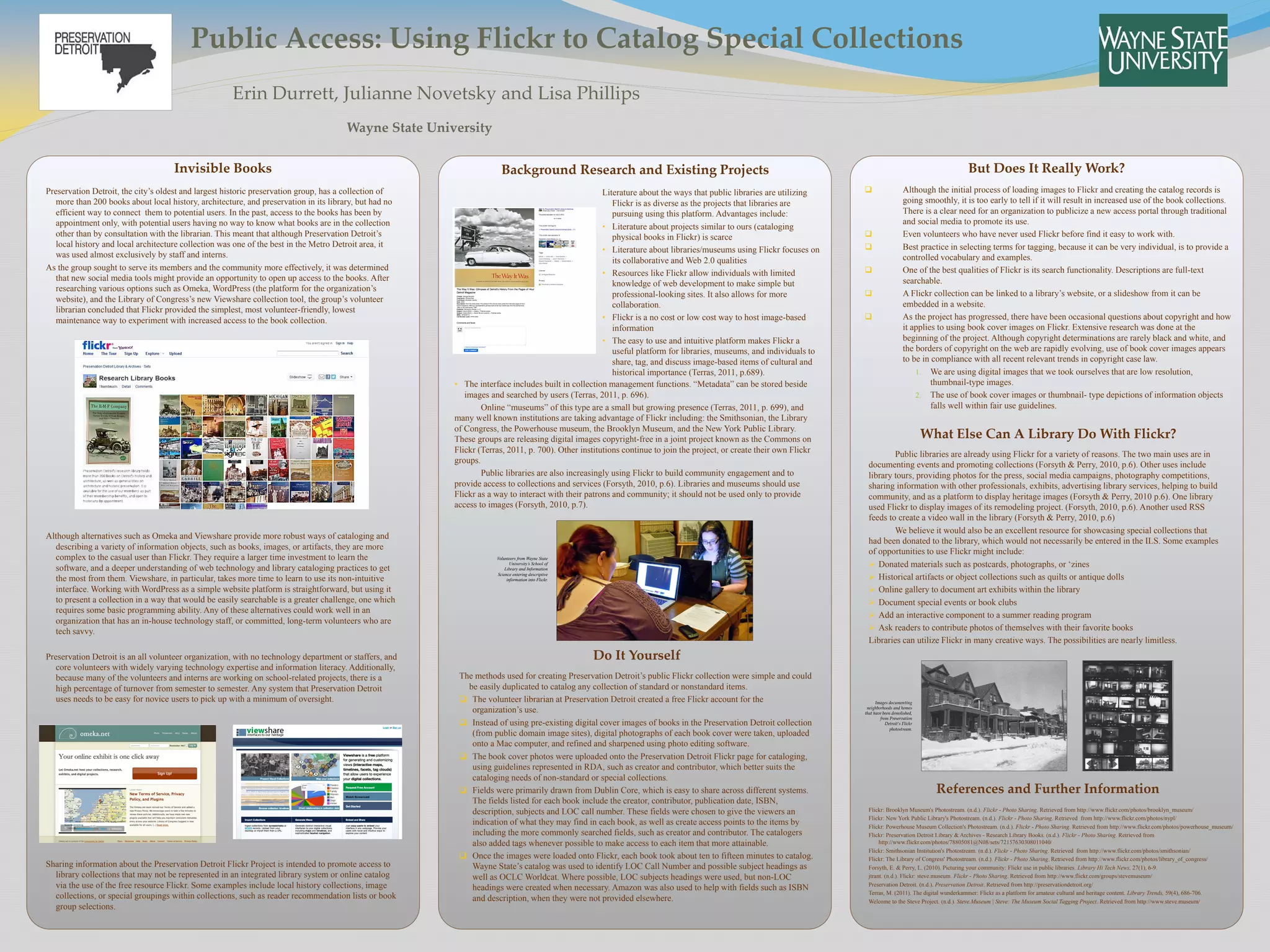Preservation Detroit is an organization dedicated to historic preservation in Detroit. It has a collection of over 200 books on local history and architecture in its library. Previously, access to these books was only by appointment, as there was no catalog or way for potential users to know what books were available. Preservation Detroit decided to catalog its book collection on Flickr to make it more accessible. Flickr was chosen because it is simple to use and maintain for volunteers compared to other options like Omeka or Viewshare that require more technical skills.
